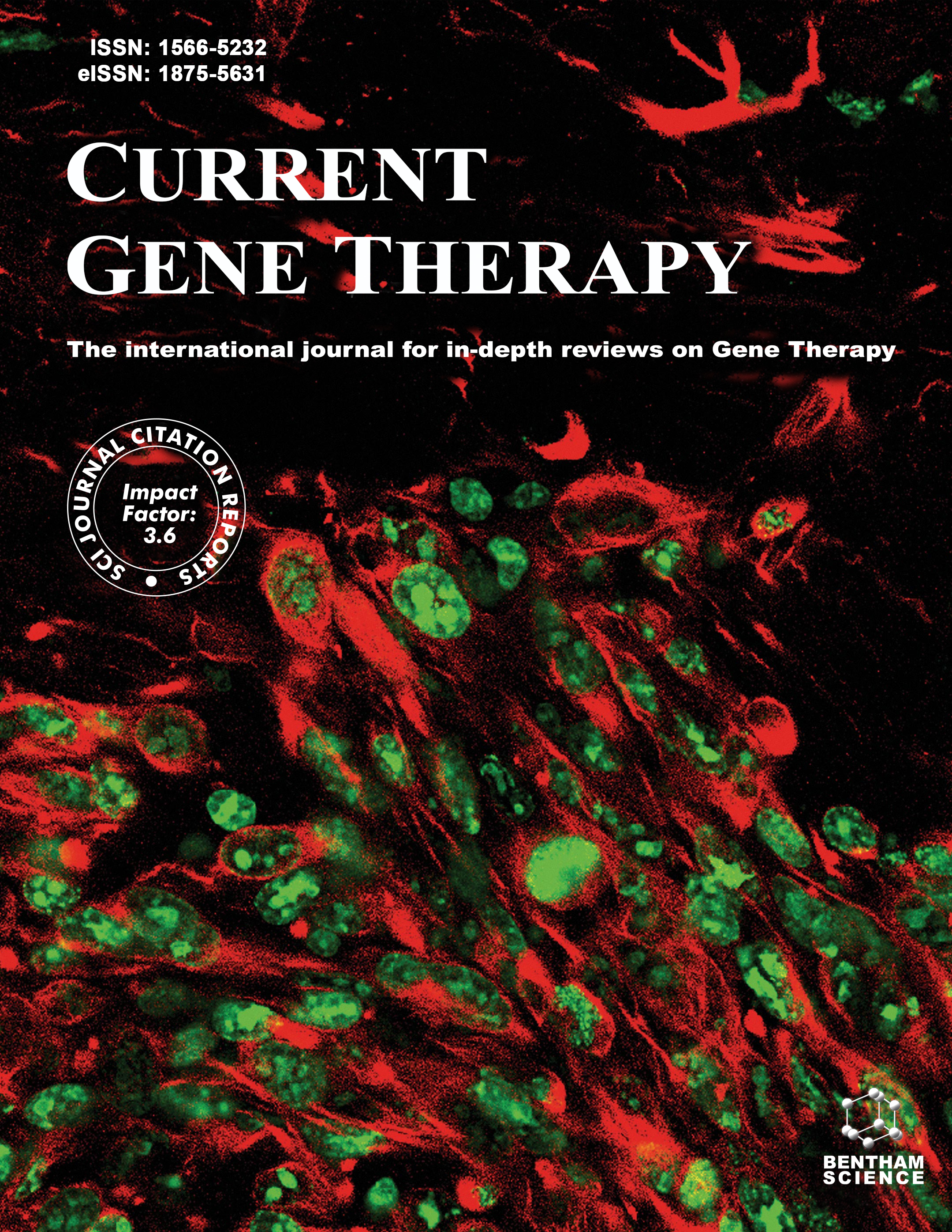- Home
- A-Z Publications
- Current Gene Therapy
- Issue Home
Current Gene Therapy - Current Issue
Volume 25, Issue 3, 2025
-
-
The Role and Treatment Strategies of Ammonia-Related Metabolism in Tumor Microenvironment
More LessTumor cells achieve their adaptability through various metabolic reprogramming processes. Among them, ammonia, as a traditional metabolic waste, plays an increasingly important role in the tumor microenvironment along with its associated metabolites. Other cells in the microenvironment can also reshape the immune status of the microenvironment by regulating ammonia-related metabolism, and targe Read More
-
-
-
Acetylresveratrol (AC-Res): An Evolving Frontier in Modulating Gene Expression
More LessBackgroundAcetylresveratrol (AC-Res), to date, is a powerful stilbene phytoalexin generated organically or as a component of a plant's defensive system, is a significant plant phenolic chemical portion and is investigated as a therapy option for a number of disorders. Owing to its inadequate stabilisation and considerable conformation rigidity, the utility of AC-Res as a medication is limited.ObjectiveThe current review article o Read More
-
-
-
Human Virus-Like Proteins: Implications for Gene Therapy
More LessAuthors: Aya Al Othman, Anna Polyanskaya and Mikhail DurymanovAn analysis of mammalian genomes has revealed a significant number of DNA sequences with transposon or viral origin. Some of these elements encode functional proteins, repurposed during evolution to play significant physiological roles in certain tissues. Some human virus-like proteins, such as Peg10 and Arc/Arg3.1, structurally demonstrate significant similarity with Gag retroviral proteins, while others, like syncytins-1 a Read More
-
-
-
Recent Advances in Therapeutics and Manufacturing Processes of Recombinant Adeno-Associated Virus for the Treatment of Lung Diseases
More LessAuthors: Luis Sorroza-Martinez, Mia Pelletier, David Guay and Bruno GailletDeveloping delivery vectors capable of transducing genetic material across the lung epithelia and mucus barrier is a major challenge and of great interest to enable gene therapies to treat pulmonary diseases. Recombinant Adeno-associated Viruses (rAAVs) have emerged as attractive candidates among viral and non-viral vectors due to their broad tissue tropism, ability to transduce dividing and quiescent cells, and thei Read More
-
-
-
oa Hereditary Patterns and Genetic Associations in Obsessive-Compulsive Disorder (OCD): Neuropsychiatric Insights, Genetic Influences, and Treatment Perspectives
More LessObsessive-Compulsive Disorder (OCD), a prevalent neuropsychiatric condition, affects approximately 2%-3% of the global population. This paper provides an extensive overview of OCD, detailing its clinical manifestations, neurobiological underpinnings, and therapeutic approaches. It examines OCD's classification shift in the DSM-5, the role of the cortico-striato-thalamo-cortical pathway in its development, and the vari Read More
-
-
-
Knockdown of hsa_circ_0102231 Impedes the Progression of Liver Cancer through the miR-873–SOX4 Axis
More LessAuthors: Jingyu Qian, Banghong Jiang, Zhongqiang Qin and Yulin TanBackgroundHepatocellular carcinoma (HCC) is one of the most intractable tumors in the world due to its high rate of recurrence and heterogeneity.AimsThe objective of this study was to investigate the role of circular RNA 0102231 (hsa_circ_0102231) in the progression of liver cancer.MethodsIn this study, quantitative polymerase chain reaction experiments were performed to quantify the hsa_circ_0102231 lev Read More
-
-
-
Characteristics of Oxidative Phosphorylation-Related Subtypes and Construction of a Prognostic Signature in Ovarian Cancer
More LessAuthors: Jiaojiao Lu, Shuai Zhen and Xu LiBackgroundOvarian cancer is associated with a high mortality rate. Oxidative Phosphorylation (OXPHOS) is an active metabolic pathway in cancer; nevertheless, its role in ovarian cancer continues to be ambiguous. Therefore, the objective of this study was to identify the prognostic value of OXPHOS-related genes and the immune landscape in ovarian cancer.MethodsWe obtained public ovarian cancer-related datasets from Read More
-
Volumes & issues
-
Volume 25 (2025)
-
Volume 24 (2024)
-
Volume 23 (2023)
-
Volume 22 (2022)
-
Volume 21 (2021)
-
Volume 20 (2020)
-
Volume 19 (2019)
-
Volume 18 (2018)
-
Volume 17 (2017)
-
Volume 16 (2016)
-
Volume 15 (2015)
-
Volume 14 (2014)
-
Volume 13 (2013)
-
Volume 12 (2012)
-
Volume 11 (2011)
-
Volume 10 (2010)
-
Volume 9 (2009)
-
Volume 8 (2008)
-
Volume 7 (2007)
-
Volume 6 (2006)
-
Volume 5 (2005)
-
Volume 4 (2004)
-
Volume 3 (2003)
-
Volume 2 (2002)
-
Volume 1 (2001)
Most Read This Month Most Read RSS feed
Article
content/journals/cgt
Journal
10
5
false
en

Most Cited Most Cited RSS feed
-
-
New Hope for Intervertebral Disc Degeneration: Bone Marrow Mesenchymal Stem Cells and Exosomes Derived from Bone Marrow Mesenchymal Stem Cell Transplantation
Authors: Xiao-bo Zhang, Xiang-yi Chen, Jin Qi, Hai-yu Zhou, Xiao-bing Zhao, Yi-cun Hu, Rui-hao Zhang, De-chen Yu, Xi-dan Gao, Ke-ping Wang and Lin Ma
-
- More Less

